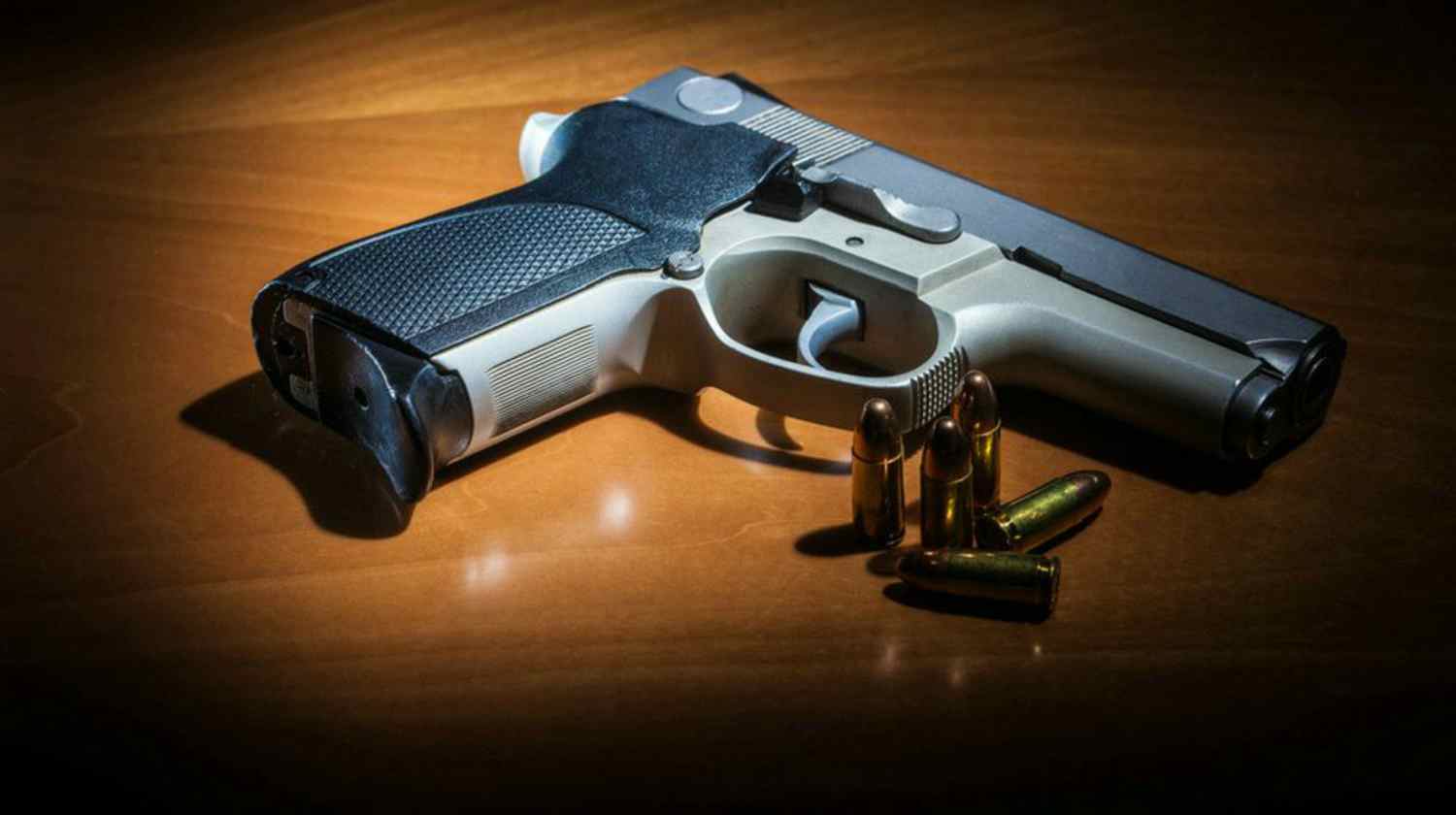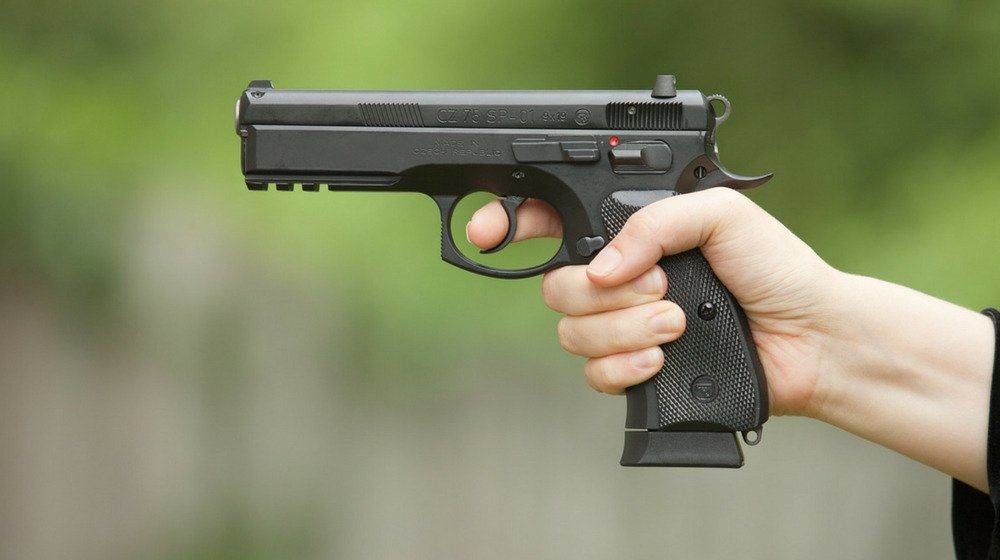By Interest
Shooting Range Safety and Etiquette pt. 1
Published
2 years agoon

I have the advantage of growing up in a firearms friendly state (Arizona) and have been shooting since my youth in the 1960's. Upon leaving military service, I became a law enforcement officer eventually retiring from the Arizona Highway Patrol. Early in my LEO career I became a NRA Certified Police Firearms Instructor and continue to train civilian, military and police, as an NRA Firearms Instructor and teach Arizona's Concealed Carry Classes. I have had an FFL since the 1980's and gunsmith, mostly tactical firearms, from handguns to rifles.
I had founded the Copper Basin Sportsmen's Club in Kearny, Arizona, in the 1980's, simply because there was no organized shooting clubs in the area and most people shot out in the desert, which still is common today. I was the president, chief range officer, firearms instructor and match director of the club and ran most of the monthly shooting event competitions. We called our early stage of Action Pistol or Steel Challenge shooting, “Combat Action Pistol Shoots” or C.A.P.S. matches. We later used the name “Competitive” in place of “Combat” when the disgraceful attacks on our firearms rights severely increased during the Clinton era as some members thought it was more “Politically Correct” to do so.
What brought about the Copper Basin Sportsmen's Club was I had gone out to attend a “Turkey” shoot being held by a “not to be named for legal purposes”, local chapter of a club. Upon arrival at the shoot, I observed drinking of alcohol, the casual handling of rifles with no regards as to which direction or who the muzzle covered or bolts open to show the firearms were not loaded and in battery, ready to fire. Needless to say I turned around, left and didn't return. I later put an ad in the local newspaper about forming an organized gun club, had a meeting and proceeded to lease land from a local rancher to form the basis of the shooting ranges. The NRA associated club still exists today and the fellow who filled my shoes after I transferred out of the area is still the president.
So let's see, back on subject.
Shooting Range Safety and Etiquette
The NRA's three rules for gun safety are:
- Always keep the muzzle pointed in a safe direction.
- Always keep your finger off the trigger until ready to shoot.
- Always keep the firearm unloaded until ready to shoot.
Following these rules will ensure safety and if you see someone who is not doing so, you should politely remind them of these rules. Of course, as I mentioned earlier, there should be NO alcoholic beverages consumed and to take it further, no prescription medications that impair judgment or function consumed prior to shooting. Most will say, “My shooting range already has these rules” and while many of you do use shooting ranges that are supervised properly, there are, especially in states like Arizona, many shooting ranges used by the public that are not. It is up to the shooters using the range to conduct their practice in a safe manner. Safety is important at every shooting range, supervised or not, and you should never become complacent or assume because someone else is shooting on the range they know the proper procedures or rules of etiquette.
Having been a police officer, firearms instructor, and range officer I have encountered people who are supposed to be competent in usage of guns and they still make mistakes. You should never assume they know what you're talking about or know how to handle firearms safely. Explain clearly what the function and controls are on the firearm and how to clear it properly. Explain to a new shooter what the sights are and what sight picture is, don't assume they know. Tell a new shooter how to recognize a misfire, a squib load and jams and not to turn around with the firearm in hand to ask you a question. They inadvertently cover other shooters and you when doing so. You should be wearing eye and ear protection (did I need to say that? Hell yes!)
Maintain control of firearms at all times. Keep the muzzle down range and when you're not shooting, keep the action open and magazine out. When going down range to set targets, make sure everyone knows that the range is going “Cold” and ensure other shooters clear their firearms, lock the action open and have the magazine out, or the cylinder open to display an empty firearm. If the bolt or action will not lock back, a plastic chamber flag or at least an empty casing can be used to hold it open, similar as a “Stove Pipe” jam would hold the bolt back. They should step away from the shooting area to indicate it is safe to go forward to place and check targets. There should be no handling of firearms or reloading of magazines during the “Cold Range.”
When you are back on the line, declare the range is ready to go “Hot.” Ensure no one is down range and when everyone is ready, shooting may resume. Remember the firearm is always pointed down range, no exceptions. Act like a powerful magnet has it stuck pointed in that direction. When clearing, you keep it pointed down range, when loading you keep it pointed down range. If you need to move, you move around the firearm, never crossing the muzzle or covering others with the muzzle. I have seen shooters pass guns back and forth without regards to ensuring the firearm is clear or which direction the muzzle is facing. Better to have your friend go to where your firearm is, rather than pass it over to him or her. Ensure you explain the function of your firearm, where the safety is located, how to check and see if it is clear and clear it, always with the muzzle down range.
When you are finished shooting, case your firearm, unloaded and if possible, action open. If not, use a plastic chamber flag to indicate an unloaded chamber. Also have the magazine out of the firearm. You should arrive at the shooting range the same way. Most onsite and manned shooting ranges require you to not bring your firearm loaded onto the shooting range. That is called a “Cold Range.” Some will not let you carry it to the firing line if it is not cased. If you have several firearms you intend to shoot that day, you may not have cases for all of them. If your range doesn't require every firearm to be cased, you need to ensure the action is open, no magazine in place and the muzzle is straight up in the air as you walk to the firing line.
Remember, never assume people know what you're talking about when it comes to safe gun handling. If you have time, take an NRA Course or learn from someone who is capable and has the knowledge and ability to teach you.
A point to mention is when you instruct or provide good information to a shooter, make sure the person understands your meaning. I was assisting a well experienced Concealed Carry Instructor with a class of thirty students. They received instructions prior to the class, not to bring their firearms loaded . However, there are always a few that for some reason do. Because we had an indoor shooting range near the classroom, at the first break we had the students enter the shooting range one by one to “Unload” their pistols. The first young man to do so, went on the range, kept the pistol pointed down range and rather than pull the magazine out and clear the pistol, proceeded to fire all 17 rounds down range before we could stop him. No eye protection, no hearing protection. Did he not do what he was instructed to do? He was told to unload his pistol and he did as instructed. (I wonder what his house looked like if that's the way he unloaded at home!) He was nervous he wasn't going to be allowed to attend the class and expressed so. My answer was: “You can attend, but you really need more training than what few basics this class provides.”
For those of you interested in receiving a solid foundation of shooting skills and training, go to nrainstructors.org for availability in your area. I am located in Oro Valley, Arizona, should you like to attend training though our instruction: Murray's Firearms and Ammunition.
Stay safe and ready.
Originally posted on April 17, 2015 @ 3:45 AM


Ammunition Vending Machines: The Controversial Rise Grocery Stores

Minnesota Gun Safety Laws: Balancing Rights and Public Safety

Apalachee High School Shooting: A Tragedy Fueling the Gun Control Debate

The 20mm Solothurn: Unleashing Historic Firepower in Modern Times

Best 9mm Pistols for 2024

Staccato P Review | Staccato P 1000 Round – The Most Accurate Duty Pistol













Thanh Samayoa
July 11, 2016 at 11:32 AM
My children were searching for IRS 706 yesterday and learned about a great service that hosts lots of sample forms . If people are interested in IRS 706 too , here’s http://goo.gl/bFSXvX
stan
July 3, 2015 at 7:32 AM
Outstanding:..My motto..Think gun safety..Always..Never assume anything..I am a former U.S. Marine and two year combat Viet Nam Veteran.I am a member of the Seattle Police Range..I try to shoot a couple times a month.You better follow the rules,or they will pull your membership.Know the gun laws of your state..I carry a copy in my truck..I really like site……..Fantastic….